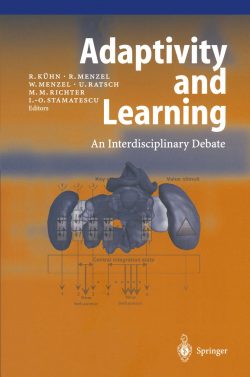This book summarises the newest information on seasonal adaptation in animals. Topics include animal hibernation daily torpor thermoregulation heat production metabolic depression biochemical adaptations neurophysiology and energy balance. The contributors to this book present interdisciplinary research at multiple levels ranging from the molecular to the ecophysiological as well as evolutionary approaches. The chapters of this book provide original data not published elsewhere which makes it the most up-to-date comprehensive source of information on these fields.
The book’s subchapters correspond to presentations given at the 14th International Hibernation Symposium in August 2012 in Austria. This is a very successful series of symposia (held every four years since 1959) that attracts leading researchers in the field. Like the past symposia this meeting – and consequently the book – is aimed not only at hibernation but at covering the full range of animal adaptations to seasonal environments. For the next four years this book will serve as the cutting-edge reference work for graduate students and scientists active in this field of physiology and ecology.
.
A single origin of heterothermy in mammals. – Afrotropical heterothermy: a continuum of possibilities. -Tropical heterothermy – does the exception prove the rule or force a re-definition? Hibernation in free-ranging African woodland dormice Graphiurus murinus.- Evolutionary ecology of mammalian hibernation phenology.- Inter-relationships among timing of hibernation reproduction and warming soil in free-living female arctic ground squirrel.- Assessing the effect of climate change on hibernating mammals using computer intensive methods.- Impact of climatic variation on the hibernation physiology of Muscardinus avellanarius.- Comparison of variables of torpor between populations of a hibernating subtropical/tropical bat at different latitudes.- The Other Functions of Torpor.- Survival aging and life-history tactics in mammalian hibernators.- Does Age matter? Effects of age on hibernation patterns in edible dormice (Glis glis).- Sex and seasonality: reproduction in the echidna (Tachylossus aculeatus).- Sex differences in foraging behavior body fat and hibernation patterns of free-ranging Common hamsters .- Summer sexual segregation and true winter hibernation by a subtropical bat.- Heterothermy in caprimulgid birds: a review of inter- and intraspecific variation in free ranging populations.- The brain at low temperature: tau hyperphosphorylation dynamics in hibernation and torpor.- The hibernation-related peptide TSKY acts as a neuroprotector in cultured pond snail neurons.- The torpor-arousal cycle is controlled by an endogenous clock.- Ultradian episodes of thermogenesis in mammals – implications for the timing of torpor entry and arousal.- Spontaneous daily torpor versus starvation-induced hypothermia: two sides of a medal or distinct phenomena?
Does the road traveled matter? Natural versus prematurely induced arousal from torpor.- The hibernating immune system.- The Relationship between White Nose Syndrome and Dietary PUFA levels in Bats.- Impact of Hibernation on Gut Microbiota and Intestinal Barrier Function in Ground Squirrels.- Cardiac electrical alternans and ventricular fibrillation during hypothermia in non-hibernating versus hibernating animals: role of propagation velocity and dispersion of depolarization.- Neonatal Deep Hypothermia: Heart Function and Metabolism.- Seasonal Changes in Thermoregulatory Strategies of Tegu Lizards.- Phylogenetic background of hibernation and hibernation-specific proteins (HP) in Sciuridae.- Adenosine AMP and Daily Torpor .- On the dissimilarity of 5’-AMP induced hypothermia and torpor in mice.- Potential mechanisms of metabolic suppression downstream of central A1AR activation during onset of torpor.- Fast In Slow Out: Patterns and Mechanisms of Mitochondrial Metabolic Suppression in Mammalian Hibernation.- Adjustments of mitochondrial energy transduction in response to physiological and environmental challenge.-
Redox Metabolism during Tropical Diapause in a Lepidoptera Larva.- Biochemical regulation of carbohydrate metabolism in hibernating bats .- Theme and variation: proteomic changes across three organs in hibernation cycles of the 13 lined ground squirrel.- Putting the brakes on protein synthesis in mammalian hibernation.- Brown adipose tissue – a seasonal tissue in mammals including humans? Systematic screening for mutant mouse lines with defects in body temperature regulation.- Diurnal changes in metabolic rate in pygmy marmosets: Implications for sleep torpor and basal metabolism in primates.- Torpor use and body mass gain during pre-hibernation in late-born juvenile garden dormice exposed to food shortage.- Seasonal variations in energy turnover and body temperature in free-living edible dormice Glis glis.- The effect of ambient temperature on body mass torpor food intake and leptin levels: implications on the regulation of food intake in mammalian hibernator.- Monthly sex differences in circulating hormones in free-living Callospermophilus lateralis (Golden-mantled ground squirrels).- Pufas Prostaglandine seasonality.- Genes Expression of Orexigenic and Anorexigenic Neuropeptides during the Fattening and Hibernation Period in Daurian Ground Squirrel (Urocitellus dauricus).
This book summarises the newest information on seasonal adaptation in animals. Topics include animal hibernation daily torpor thermoregulation heat production metabolic depression biochemical adaptations neurophysiology and energy balance. The contributors to this book present interdisciplinary research at multiple levels ranging from the molecular to the ecophysiological as well as evolutionary approaches. The chapters of this book provide original data not published elsewhere which makes it the most up-to-date comprehensive source of information on these fields.
The book’s subchapters correspond to presentations given at the 14th International Hibernation Symposium in August 2012 in Austria. This is a very successful series of symposia (held every four years since 1959) that attracts leading researchers in the field. Like the past symposia this meeting – and consequently the book – is aimed not only at hibernation but at covering the full range of animal adaptations to seasonal environments. For the next four years this book will serve as the cutting-edge reference work for graduate students and scientists active in this field of physiology and ecology.
Summarizes the most up-to-date information on seasonal adaptation in animals
Chapters correspond to presentations to be given at the 14th International Hibernation Symposium
Serves as the cutting-edge reference for graduate students and scientists working in this field of physiology and zoology





